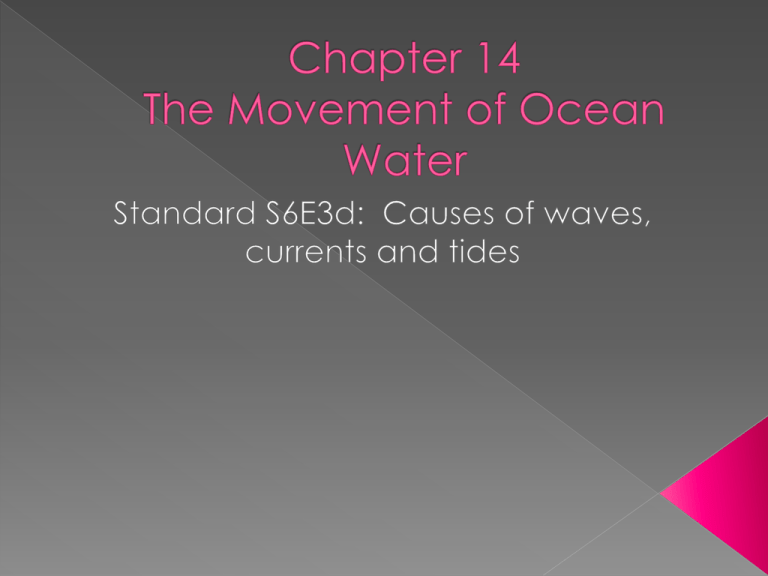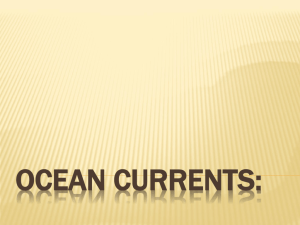Chapter 14 The Movement of Ocean Water
advertisement

Ocean Currents Movement of ocean water in a regular pattern Influenced by weather, Earth’s rotation, position of continents Surface Currents Horizontal movement of ocean water near the surface Controlled by global winds, the Coriolis effect, continental deflections Global Winds Blow across Earth’s surface Near Equator blow east to west Near Poles blow west to east The Coriolis Effect The apparent curving of the path of a moving object due to Earth’s rotation N. Hemisphere curves clockwise S. Hemisphere curves counterclockwise Continental Deflection Currents change direction when they hit a continent Affected by Temperature Currents carry the temp. of its point of origin to its destination Ex: The Gulf Stream carries warm water to southern England Deep Current Streamline movement deep below the surface NOT controlled by wind Forms where density increases because of changing temp. & salinity Less dense water rises to top Dense water sinks See p. 420 Describe how global winds, the Coriolis Effect and continental deflection form a pattern of ocean surface currents. Explain how salinity controls deep currents. Surface Currents Warmer than deep currents Ex: Gulf Stream— warm water Ex: California Current—cold water Upwelling Occurs when local warm winds blow across surface currents & leaves the cold deep currents exposed or uncovered Cold, nutrient rich deep water rises to the surface Small fish rise with the cold water Big fish come in for “dinner”—Example of the food chain El Nino Occurs every 2 to 12 years S. Pacific Trade Winds move less warm water to the W. Pacific Causes high temp. & decreased trade winds in tropical ocean Has global impact by changing the interaction between the ocean & atmosphere Causes extreme weather— drought & floods Prevents upwelling









